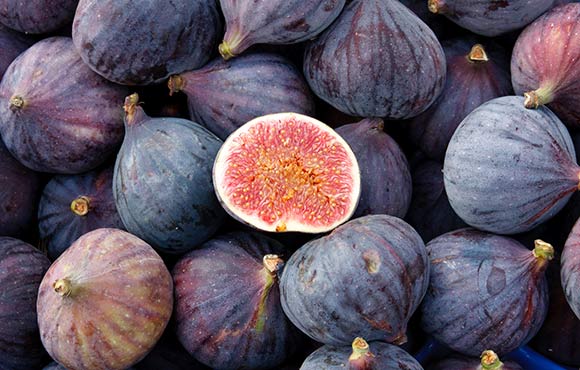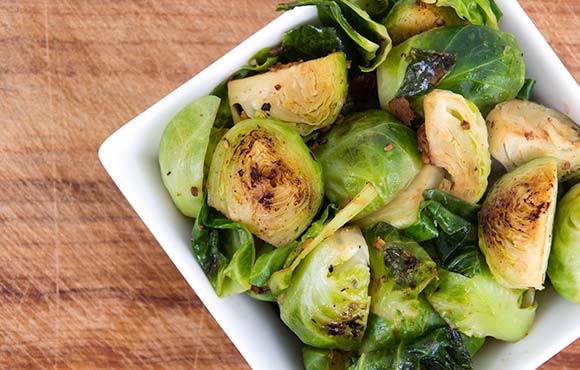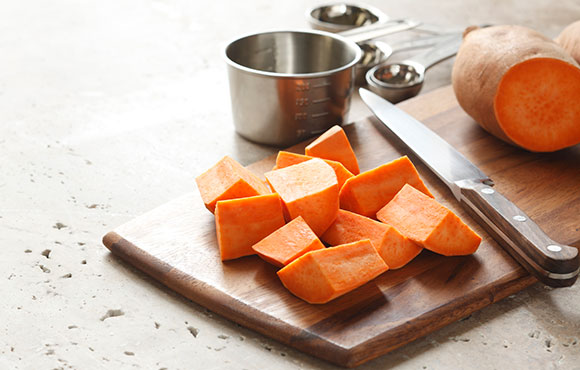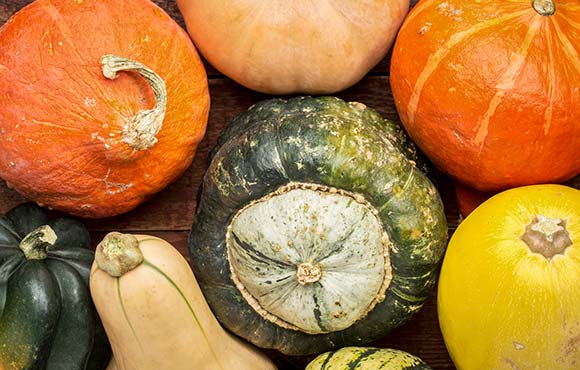Stock up on these in-season fruits and vegetables during your next trip to the grocery store or famer’s market.
Apples
1 of 11
There's a reason everyone goes apple picking in the fall: apples are officially in-season, starting in August. Enjoy them alone for four grams of fiber per serving or—even better—bake them in a seasonal apple pie.
Cauliflower
2 of 11
Cauliflower is a vegetable that can be grown throughout the year, but it's really in its prime during the colder months. Consider replacing your Thanksgiving mashed potatoes with mashed cauliflower. Not only will you trade out a serving of carbs for veggies, but with a little butter and cream, it won't taste that much different than the real thing.
Figs
3 of 11
If you haven't tried figs, you're missing out. Not only can figs lower high blood pressure, but their sweetness makes them a tasty dessert option. Look out for figs during the first month of fall, and try caramelizing them for a sweet-tooth alternative to holiday cookies and cakes.
Grapes
4 of 11
You may think grapes are a summer fruit, but many subtypes make their appearance just for fall, including champagne grapes and concords. Grapes contain powerful antioxidants, specifically resveratrol, which promotes heart-health—also the reason why your cardiologist may recommend a glass of red wine every so often.
Pumpkins
5 of 11
No, they're not just for carving. Pumpkins are a nutritious source of potassium and fiber, and most are in season starting in September. Cut up your pumpkin into chunks and throw them in the oven to soften or roast the seeds with olive oil, salt and pepper for a healthy fall snack.
Brussels Sprouts
6 of 11
Brussels sprouts come into season in September and deliver your body the protein, iron and potassium it needs. Since Brussels sprouts have a strong, bitter taste, you may need to get creative when preparing them. It's usually best to mix sprouts with another strongly flavored food like small bits of bacon.
Cranberries
7 of 11
That cranberry sauce on your Thanksgiving table isn't there by accident. Cranberries come into season in the fall and are primarily grown in the northern part of the U.S. Because they're so tart, cranberries are often used in pastries, but you can also add them to your morning oatmeal for an extra serving of wholesome fruit.
Pears
8 of 11
Pears are that perfect fruit—juicy, chockfull of vitamins and not too sweet. They're also a cold-weather fruit that comes into season in August and September. Bring out their flavor this fall by serving them baked or grilled.
Sweet Potatoes
9 of 11
Filled with Vitamin A and fiber, sweet potatoes are harvested in September, which is why they end up in so many marshmallow-filled casseroles come Thanksgiving. Try a healthier alternative and simply bake your sweet potatoes with a little butter, cinnamon and nutmeg for great taste and fewer calories.
Winter Squash
10 of 11
Winter squash may seem a little intimidating with its thick, rugged skin and odd shapes, but there's a lot you can do with it besides decorating your home. Varieties like butternut squash and acorn squash can be cut in half and baked until soft, and you can even fill in the empty centers with everything from cinnamon apples to seasoned ground beef.







Discuss This Article